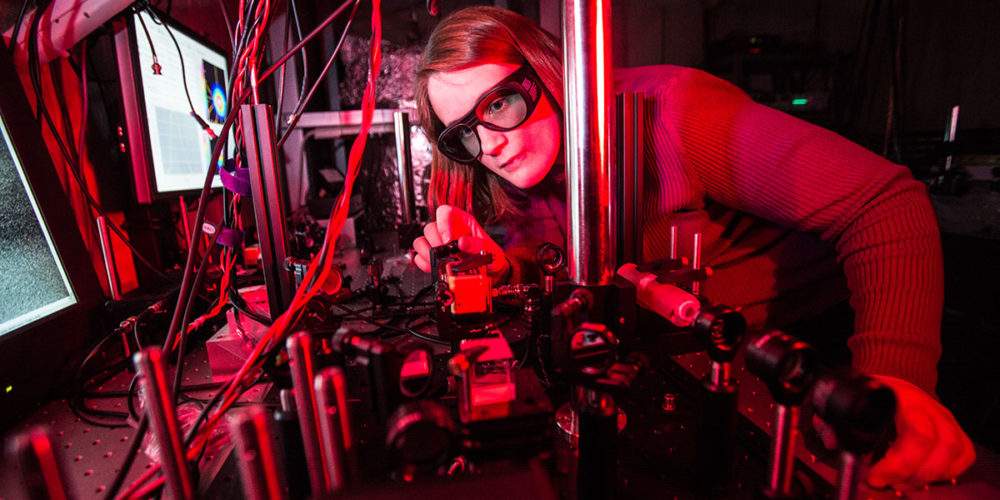On Sept. 14, 2015, scientists observed for the first time ripples in the fabric of space-time called gravitational waves. Embry-Riddle physics professors and several students from the Prescott Campus Laser Interferometer Gravitational-Wave Observatory (LIGO) group were deeply involved in the discovery, which researchers agree records the final fraction of a second of the merger of two black holes—and confirms a major prediction of Albert Einstein’s general theory of relativity. The collision of two black holes had been predicted but never before observed.
“Think of space as a symphony. Astronomy, the study of light in space, has allowed for the observation of this symphony; now, with gravitational waves, we can hear the symphony,” says Michele Zanolin, professor of physics at Embry-Riddle’s Prescott Campus and principle investigator for the Embry-Riddle LIGO group.
The gravitational waves were detected by both of the twin LIGO detectors, located in Livingston, La., and Hanford, Wash. The LIGO Observatories are funded by the National Science Foundation (NSF). They were conceived and built and are operated by Caltech and MIT.
Announced in February 2016, the discovery is credited to the LIGO Scientific Collaboration (LSC), which includes the GEO Collaboration, the Australian Consortium for Interferometric Gravitational Astronomy and the Virgo Collaboration. A developer and user of the algorithm that first observed the event, Zanolin coordinates the supernova subgroup of the LIGO and Virgo collaborations.
The LIGO Group
The gravitational wave astrophysics group at Embry-Riddle’s Prescott Campus is the only LIGO group in the four corners states (Arizona, Colorado, New Mexico and Utah). Established in 2005, it has been continuously supported by the NSF since 2006. The group consists of Zanolin; Andri Gretarsson, founder of the Embry-Riddle LIGO group and professor of physics, who helped design and characterize the mirrors that form the heart of the LIGO detectors and worked on commissioning the initial LIGO interferometers; Brennan Hughey, assistant professor of physics, who was involved in vetting and analyzing the gravitational wave signal; Ph.D. student Marek Szczepanczyk; plus undergraduate students Kiranjyot Gill, Marina Koepke (’16, PC), James Pratt and Sophia Schwalbe.
